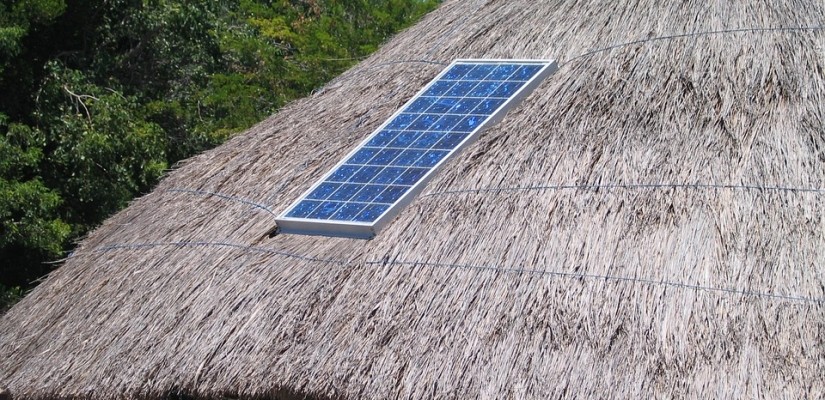Increased electricity coverage of the African continent has been an ambitious long-term goal. In 2016, only about 43% of the population in Africa had access to electricity. Estimates calculate that roughly 600 million people are not connected to an electricity source. Africa’s 1.3 billion population is projected to grow in the future and so will the demand for energy. This will pose a serious problem to stakeholders such as policymakers, engineers, innovators, and energy companies. Relying on carbon-free, green energy alternatives could become a sustainable solution for consumers and the environment. Solar power is often considered as a viable energy supply for a continent that receives an abundance of sunshine throughout the year. In order to add solar power to the African energy mix in the long term, however, a number of challenges need to be addressed.
The African energy sector faces three key problems. First, a lack of electrical capacity or access to it is a major issue. Rural areas suffer most from low electrical permeation. Hospitals and clinics that do not run on electricity would benefit vastly from self-sufficient access to power. More lives could be saved, and vaccines could be stored in refrigerators. Second, power outages remain a major setback for the energy industry. Even leading countries like South Africa and Nigeria struggle with power shortages that hamper economic and social prosperity in the long term. Third, high energy tariffs in Sub-Saharan Africa disrupt a viable cost-benefit balance. Businesses and private households in several countries still generate power with diesel or kerosene, which are more costly and less safe than photovoltaic solar panels.
The solar energy market may provide profitable investment opportunities because sun exposure in Africa facilitates this form of energy production. Solar panels could also reach consumers more easily, as photovoltaic panels do not depend on a network of electrical grids. Therefore, solar panels could be installed more quickly. Additionally, solar-based energy is reportedly cheaper than centralized, grid-connected electricity. An increase in solar-generated power demonstrates that this environmentally friendly alternative has gathered attention on the African continent. In 2009, only 1% of Sub-Saharan Africa used solar-produced electricity. Six years later, in 2015, the amount rose to 5%, supplying 11 million people with power. Estimates by the International Energy Agency, a Paris-based think tank, forecast that the number of people reliant on solar power could rise to 500 million by 2030. Prognoses by more critical voices estimate a much lower percentage of solar energy in the overall energy compound, forecasting that established energy resources such as natural gas will remain a greater proportion in Africa’s total energy mix.

A trans-border economic development initiative that is worth mentioning is the New Partnership for Africa’s Development (NEPAD), a program initiated by the African Union. An important objective of the NEPAD is to establish access to stable power even in remote, dispersed homes in rural areas where constructing grid-connections would be unprofitable. Green electricity sources such as solar or wind energy could satisfy that need.
Sunnier North African countries like Egypt, Tunisia, and Morocco are already pushing for renewable energy sources. Among these states, Morocco is emerging as a leader in solar power as it expands the Ouarzazate Solar Power Station to become the largest world-wide sun-based electricity facility. Other countries that enjoy high sun exposure such as South Africa, Niger, Libya, or Algeria could also benefit from their natural weather conditions. In contrast, countries such as Sierra Leone, Rwanda, Uganda, Liberia, or the Republic of Congo are more prone to wet and humid weather, which is why solar energy projects could be less efficient in these states.
While this renewable energy option produces several advantages, it also poses serious challenges that need to be overcome. Fitted payment plans need to be created in order to provide households with opportunities to install solar panels. Such financing solutions could come in the form of fee-for-service agreements. Another key development facilitating better energy access is an improvement of physical infrastructure and communications technology. Furthermore, regional cooperation among governments could enable trade by decreasing import duties. Finally, security, as well as good political and corporate governance, are also determining factors for energy goals.
The list of challenges may be long, but improved energy access and stability would aid economic development in African countries. Although solar power may not become an industry leader due to its comparably low energy output, it has the potential to grow in a market that is in dire need of innovative electricity supply solutions.
